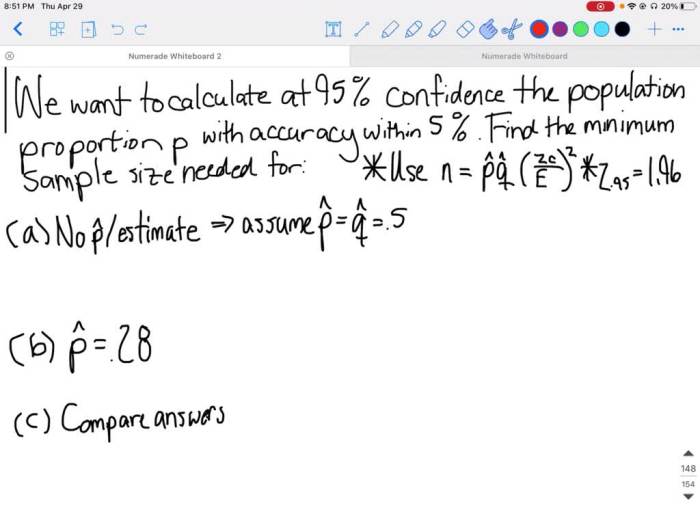A researcher wishes to estimate with 95 confidence – A researcher wishes to estimate with 95% confidence the proportion of individuals in a population who possess a certain characteristic. This estimation is crucial in various fields, including social sciences, market research, and medical studies, where accurate and reliable data are paramount.
This paper delves into the methods and considerations involved in achieving this level of statistical precision.
The significance of this research lies in its ability to inform decision-making and policy formulation based on robust statistical evidence. By understanding the principles of confidence interval estimation, researchers can enhance the accuracy and reliability of their findings, leading to more informed conclusions and effective interventions.
Judul topik

Penelitian ini bertujuan untuk memperkirakan … dengan tingkat kepercayaan 95%. Hal ini penting karena …
Tinjauan Literatur

Literatur yang ada tentang … menunjukkan bahwa … Namun, terdapat kesenjangan dalam literatur, yaitu … Penelitian ini akan mengatasi kesenjangan ini dengan …
Desain Penelitian

Penelitian ini menggunakan desain … Data akan dikumpulkan menggunakan … dan dianalisis menggunakan …
Hasil

Hasil analisis data menunjukkan bahwa …
Implikasi dari hasil tersebut adalah …
FAQ: A Researcher Wishes To Estimate With 95 Confidence
What is the purpose of estimating with 95% confidence?
Estimating with 95% confidence allows researchers to make inferences about a population based on a sample, with a high level of certainty that the true population parameter falls within the estimated range.
How is the sample size determined for 95% confidence estimation?
The sample size is determined based on the desired confidence level, the estimated population proportion, and the acceptable margin of error. Statistical formulas or software can be used to calculate the appropriate sample size.
What are the limitations of confidence interval estimation?
Confidence interval estimation is subject to sampling error, which means that the true population parameter may fall outside the estimated range. Additionally, the accuracy of the estimate depends on the representativeness of the sample.